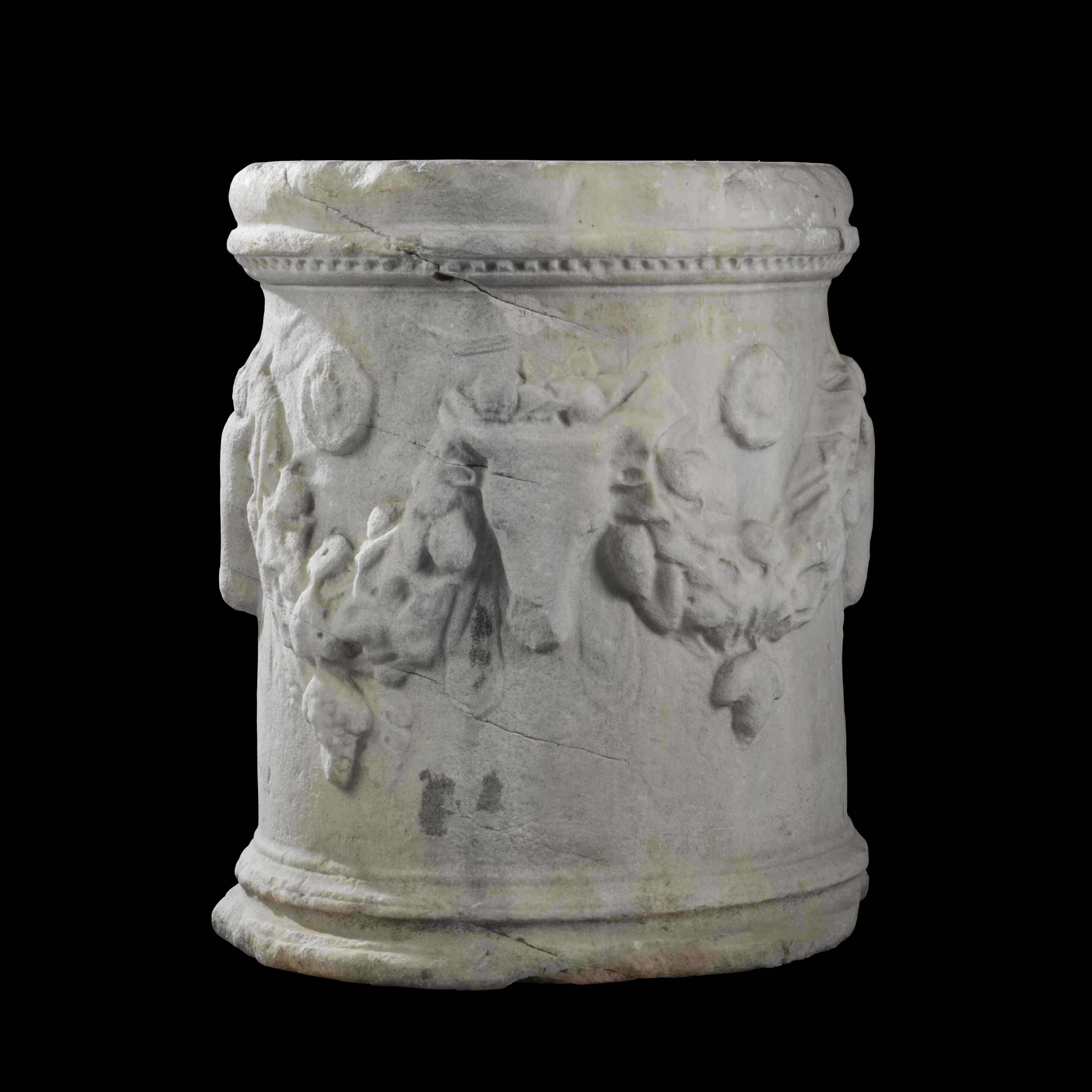Terracotta antefix with Europa sitting on the bull
Swiss private collection, since 1977
Rudolf Känel
Ein etruskisch-italisches Antefix mit der Darstellung der Europa auf dem Stier, in: Quaderni Ticinesi, Numismatica e Antichità Classiche, XXIV, 1995, 217-226
Representing the abduction of Europa by Zeus in the guise of a white bull to the right, modelled with great care and details for the folds of the skin, the joints and the structure of the bones, Europa is riding sidesaddle, wearing a himation on the lower part of her body. Polychromy, traces of red and yellow paint.
Note
The rape of Europa is mentioned by Homer (Hom. II. 14, 321f.) as the daughter of Phoenix. Our knowledge of her fate is based on a relatively late rendering of the myth by the Roman poet Ovid (43 B.C.-18 A.D.). In his ‘Metamorphoses’ he describes how the love-crazed father of the god, Zeus, turns himself into a bull in order to abduct and seduce the Phoenician princess (Ovid Met. 2, 833-875). The pictorial tradition however is much older. Early representations of Europe riding on a bull are already found in the Archaic period in vase paintings or on a metope from temple Y in Selinunte (c.555 B.C.).







